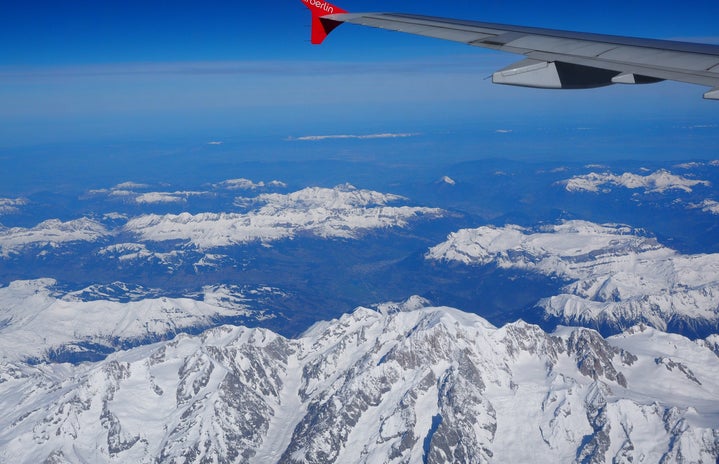What’s been my best ever summer job? Hm, tough one, but I’m going to have to go with the five weeks I spent this summer on an archaeological dig in Italy. Yeah, you read that right. This summer, I spent five weeks in southern Italy working in an ancient Roman cemetery. I would imagine this is raising a lot of questions, so let’s start from the top.
First off, yes, archaeology is really still in practice. Right now, you’re probably imagining either a bunch of British dudes in khaki gear cracking open pyramids, or else Indiana Jones, discovering artifacts and kicking Nazi butt. That’s not quite what archaeology is these days though. It’s often much more informal than you’d think; some of our most important dig tools included paint brushes and toothpicks. But archaeologists do a lot of important work. Archaeology is kind of a catch-all term, and each dig revolves around different time periods, locations, and digging methods. This summer was my first experience in the field with archaeology, and it was incredible, challenging, and absolutely amazing.Our dig site was a Roman cemetery from approximately the third century A.D., located in the middle of nowhere, southern Italy. Seriously, we were working in an agricultural field with no signs of civilization in sight.
So here’s what a typical day looked like:
- Get up at 5:30 AM so that I can get to our 6:15 bus on time. It’s important to get started early because the days get really hot. Triple digits is normal in the summer heat of July-August, and there’s little shade cover out in the field.
- Speaking of which, I lather up the sunscreen on the bus. Though I keep my sunburn-prone skin essentially covered up with long pants, long sleeves, and a bucket hat pretty much at all times, sunscreen is needed for my face, neck, and hands. And I’ll have to reapply a couple times during the day.
- We’ll be working in the field for until nearly 1 PM, with a few breaks to eat and drink scattered throughout the day. By the end of the day, I’ll have gone through up to two and a half liters of water.
The work is tough, especially in the first few weeks. But I learned how to use a pickaxe, so how cool is that? For the first couple weeks, we just dig down through the soil. It’s not until the end of the second week we start actually uncovering tombs.
The tombs are made of tile, simple, and often cracked or disturbed, starting to peek out of the dirt about 50 centimeters down in the ground. But it’s only once we’ve uncovered these tile coverings that the real science of archaeology can begin.
Archaeology is a science, and it requires documentation of absolutely everything. Drawing, measuring, weighing, and recording every aspect of each tomb is incredibly important. Once you open a grave, you can never put things back exactly as they were, so you have to make sure you take notes on everything and anything about it beforehand. But after these official measures are all taken, then we could begin opening the graves. Yes, it was as weird as it sounds, especially at first. Slowly, carefully working through the dirt, we finally get to the most important and exciting discoveries of the cemetery: the skeletons and their grave goods.
The skeletons on our dig weren’t the best preserved, but if you were working with an adult skeleton, it was often possible to tell where the legs, arms, torso, and head were. Sometimes we even got lucky and could see the remnants of a spinal column. And then, in addition to the skeletons, there were the grave goods they were buried with. The ancient Romans had some very particular ideas about the afterlife and what happened to the dead. So, to appease the spirits of the dead, and sometimes to show their affection and respect, they often buried the dead with important objects.
Pots, vases, and oil lamps (think Aladdin-style, but smaller) are some of the most common finds. Usually these vessels are made of clay, but sometimes we’ll find some made of glass or bronze relatively intact. But the most valuable finds are the rarer pieces, jewelry, and especially coins, which can be used to help establish specific dates of the graves. Over the course of five weeks, I worked on five or six different graves in one of the most unique and amazing experiences I’ve ever had. I made lots of new friends and learned an incredible amount about a time period and a field of study that really interests me.
If you’re interested in history, classics, anthropology, or archaeology, or are just looking for something really different to do this summer, check out the Archaeological Institute of America’s website for upcoming digs. They have lots of options, and if you’re lucky, you might even find scholarship opportunities, like John Carroll’s new Miller Scholarship, which is what enabled me to have this experience. As I discovered this summer, archaeology is as full of exciting discoveries as ever, and is one of the most interesting fields out there. If this article caught your interest, definitely check out some of the awesome opportunities of archaeological digs–there’s so much more to discover!


